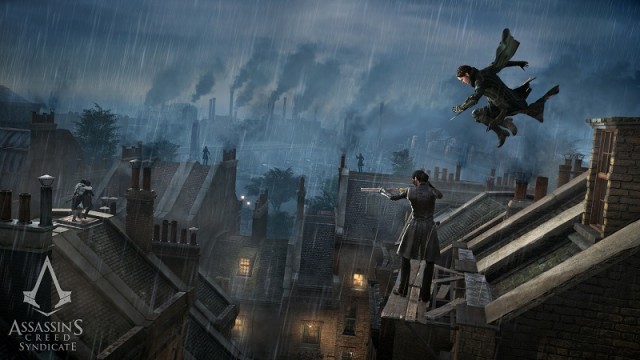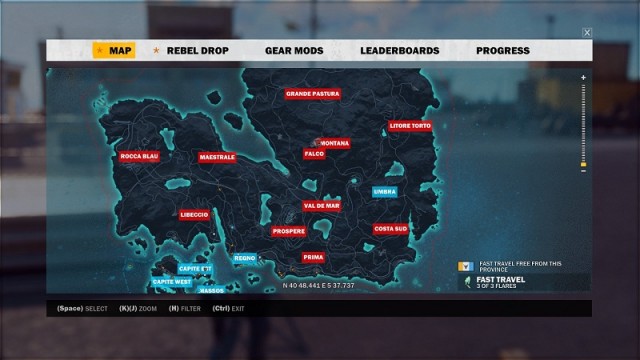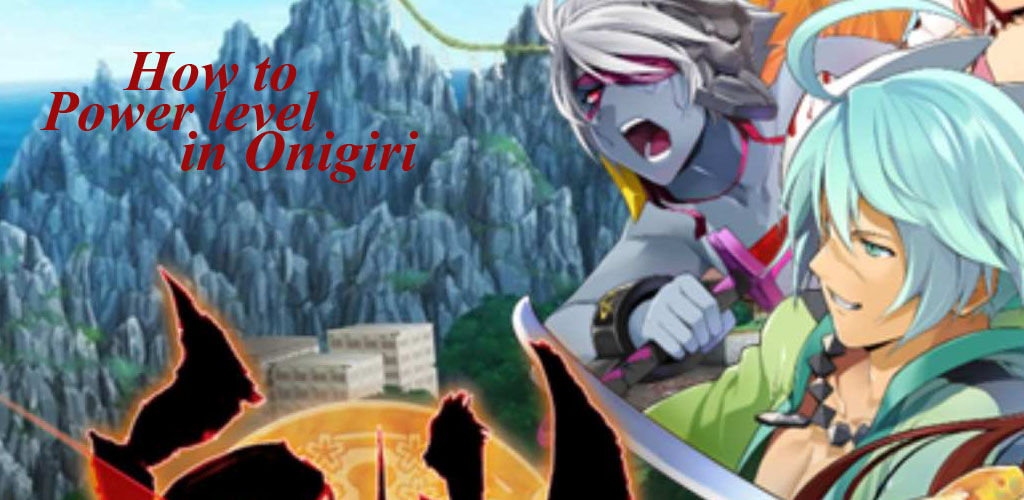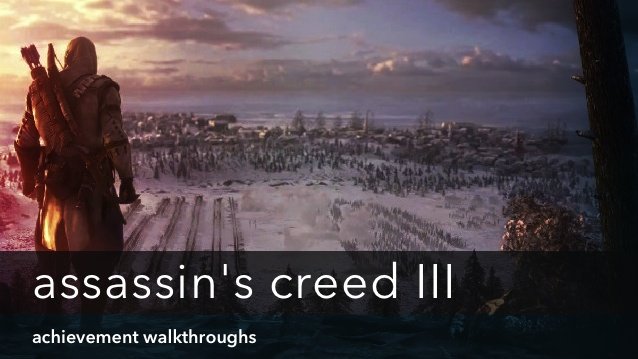

Beyond: Two Souls is the latest gaming “experiment” from David Cage’s Quantic Dream studio that, not unlike his previous endeavor Heavy Rain, hits with the promise of revolutionizing video game storytelling. However, while Heavy Rain was a fairy straightforward story, Beyond is anything but. Granted, without Heavy Rain‘s lead, Beyond wouldn’t even be possible, but this is the more accomplished game of the two.
While most will use the term ‘game’ when describing Beyond, it’s more of an interactive story. But that story is one of the most ambitious, nuanced, and complex narratives ever featured in a video game. Told through non-linear vignettes (think Tarantino-style storytelling), Beyond follows the character of Jodie Holmes (Ellen Page) from infancy to fully-fledged adulthood. Of course, Holmes’ experiences are not like that of your average girl, and it all has to do with her “special friend” named Aiden.
Although it is never clearly spelled out who or what Aiden is, we know that he is an entity that is psychically linked to Jodie. Jodie’s connection and interaction to Aiden make up the basis for her entire story, which explores everything from supernatural dimensions to CIA corruption to Native American mysticism. And while the game tackles larger, Hollywood blockbuster-style events, it also takes things to a personal level as Jodie tries to fit in and find love despite her status as an outcast. There are a lot of layers to the narrative; it’s as much a personal journey as it is a horror story, and is better left unspoiled.
Cage’s story alone makes Beyond: Two Souls worth recommending, as it strives for a scope unlike anything seen in a game before. There’s a maturity to Beyond‘s narrative in that it takes Jodie to some very dark places, and gives the player agency in her decisions. There is no good path or bad path in this game either, sometimes the player is presented with horrific or troubling choices and it is up to them to choose what solution is “best.” So, while the game feels restrictive in some aspects, particularly in gameplay opportunities, the various ways in which the story can unfold is very freeing.
That being said, the story’s scope occasionally works against it, as the player will find themselves questioning the purpose of particular storylines and the necessity for the inevitable places the narrative goes. No matter how personally affecting certain sequences are, there are still moments that feel a little out of place, almost as if they are there simply for shock value. But, as a whole, it’s hard not to be impressed with what the team at Quantic Dream was able to pull off.
Even though Jodie is at the center of the story, it is Aiden who makes Beyond stand out from Heavy Rain, mechanically. As a spiritual force inextricably linked to Jodie, Aiden is like a second player character (he can also be controlled by a second gamer). He’s her protector, her friend, and most importantly he’s the mechanic through which the player will solve a large portion of the game’s “puzzles.”
While Jodie herself has some agency in the world of Beyond, that will only get the player so far. In order to progress further the player will have to take control of Aiden in order to do any number of tasks. Say, for example, there’s a locked door in Jodie’s way – a fairly simple obstacle. By taking control of Aiden, the player can move through to the other side of the door and force the lock open by pulling back on both joysticks and letting go. Similarly, Aiden can be used to take control of NPCs, to manipulate electronic objects for Jodie’s benefit, or to punish those people, or other supernatural beings, that are trying to do Jodie harm.
So, while Heavy Rain gave the player control over a single character, and a very small framework in which to work, Beyond adds a new layer with Aiden. That isn’t to say the answers to each puzzle or obstacle are particularly hard to discover, or require complicated button inputs, but switching to a supernatural being to manipulate the world is still a clever mechanic.
Of particular note are sequences where Aiden is called upon not to help Jodie solve a problem, but to protect her. Having direct control of Aiden as he thrashes furniture about and at people is immensely satisfying… within the context of the story, of course. It’s almost as if, for a brief moment, the player becomes Carrie at the prom, and they are free to be as malicious and spiteful as they like. It’s moments like that which typify the brilliance of Beyond: Two Souls as an interactive experience.
When compared to Heavy Rain, Beyond is an improvement in every appreciable way. From the scope of the story to the strength of the visuals, this is an ambitious project that must have pushed the PS3 to its limits. Facial animation in particular is stellar in the game, especially in the eyes. Players won’t just believe that Jodie Holmes is a real character, but that Ellen Page is playing her. Page’s performance, as well as Willem Dafoe‘s, is the new benchmark for outstanding mo-cap, and she deserves all the accolades that are almost assuredly headed her way.
For as much as Beyond takes a lot from Heavy Rain‘s lead, it never tries to simply get by, but instead pushes the ideas explored by its predecessor to their logical ends. The game looks better, plays better, its story is more ambitious and layered, and most importantly the acting is of the highest caliber. When it comes to shortcomings, the game does not skimp on the performances, both those captured and those rendered.
But, there are shortcomings in Beyond: Two Souls. For starters, there will be questions of whether or not Beyond is a game or an interactive movie. Yes, this time around players have a lot more direct control over Jodie and her actions, but there are still plenty of moments where the player is simply flicking the joystick or holding a button. As well, there are things to poke and prod in each varied environment, but typically there is a clear-cut solution to every puzzle. In other words, although the player controls Aiden there are only specific items he can interact with. That’s something gamers must accept going into Beyond, but some will be turned off by the experience because of that.
As well, the minimalistic approach to control prompts — namely a single white or blue dot to signal interactive objects — sometimes works against the game, and makes it hard to discern what exactly the player should do. The same goes for the reaction-based actions (i.e. dodging, kicking, punching, etc.), which sometimes don’t adequately communicate the correct action.
As a whole, though, Beyond: Two Souls is without question one of the most ambitious undertakings of this generation — an interactive experience with a massive scope, tremendous mo-cap performances, and a story that, while a little convoluted in places, competently encompasses several decades of a girl’s very complex life. Controlling Jodie and Aiden makes for a unique combination of mechanics and puzzle-solving, but the limitations of what the player can and can’t do will feel restrictive to some. However, those who embrace the experience will find that everything has a purpose in the end, and that Jodie’s journey is a satisfying one.
Will you be checking out Beyond: Two Souls? What about the game has you most intrigued? Let us know in the comments below.
Beyond: Two Souls is out now for the PS3.
Follow Anthony on Twitter @ANTaormina.




 Top 20 Worst Sniper Fails Caught on Video
Top 20 Worst Sniper Fails Caught on Video Just Cause 3: How to Find the Last Base of Every Region Location Guide
Just Cause 3: How to Find the Last Base of Every Region Location Guide Onigiri: How to Power Level
Onigiri: How to Power Level Watch Dogs Easter Eggs and Hidden Secrets
Watch Dogs Easter Eggs and Hidden Secrets Assassins Creed 3 Achievement Walkthroughs | Guide
Assassins Creed 3 Achievement Walkthroughs | Guide